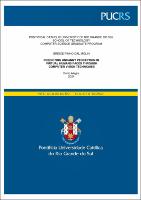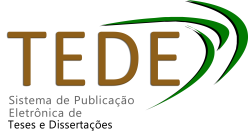| Share record |


|
Please use this identifier to cite or link to this item:
https://tede2.pucrs.br/tede2/handle/tede/11681Full metadata record
| DC Field | Value | Language |
|---|---|---|
| dc.creator | Dal Molin, Greice Pinho | - |
| dc.creator.Lattes | http://lattes.cnpq.br/8168273804205288 | por |
| dc.contributor.advisor1 | Musse, Soraia Raupp | - |
| dc.contributor.advisor1Lattes | http://lattes.cnpq.br/2302314954133011 | por |
| dc.date.accessioned | 2025-06-12T14:48:27Z | - |
| dc.date.issued | 2024-10-16 | - |
| dc.identifier.uri | https://tede2.pucrs.br/tede2/handle/tede/11681 | - |
| dc.description.resumo | Currently, the increasing presence of conversational agents and virtual humans in everyday life has attracted the attention of researchers, especially in the field of psychology. The perception of human faces has emerged as a relevant and widely investigated topic, especially considering the interaction with virtual characters. Recently, studies have explored the perception of virtual humans, highlighting the feeling of strangeness — or discomfort — that can be generated by certain representations, a central concept in the Uncanny Valley (UV) theory. This phenomenon can significantly influence our perceptual and cognitive discrimination, making it essential to understand the mechanisms that support it in order to mitigate its occurrence in the modeling of virtual humans. The present work aims to examine the relationship between facial features and the level of comfort that individuals experience when interacting with animated characters generated by Computer Graphics (CG). To this end, we propose and develop interpretable models that identify specific areas of the face that can trigger discomfort, allowing improvements that make these representations more pleasant both visually and interactively. The most effective model, which uses an ensemble technique, achieves an accuracy of 80%. The results of this study have the potential to impact several areas, such as game development, conversational agents, and the film industry, contributing to the creation of characters that avoid causing strangeness in users. To validate our approaches, we conducted experiments with participants, collecting quantitative and qualitative data that suggest that the proposed models operate as expected. In this way, we seek not only to advance the understanding of interactions with virtual humans, but also to provide practical guidelines for improving their characteristics, promoting more pleasant and comfortable experiences. | por |
| dc.description.abstract | Atualmente, a crescente presença de agentes conversacionais e humanos virtuais na vida cotidiana tem atraído a atenção de pesquisadores, especialmente no campo da psicologia. A percepção de rostos humanos emerge como um tema relevante e amplamente investigado, especialmente considerando a interação com personagens virtuais. Recentemente, estudos têm explorado a percepção de humanos virtuais, destacando a sensação de estranheza — ou desconforto — que pode ser gerada por determinadas representações, conceito central na teoria do Uncanny Valley (UV). Este fenômeno pode influenciar significativamente nossa discriminação perceptiva e cognitiva, tornando essencial compreender os mecanismos que o sustentam, a fim de mitigar sua ocorrência na modelagem de humanos virtuais. O presente trabalho tem como objetivo examinar a relação entre características faciais e o nível de conforto que os indivíduos experimentam ao interagir com personagens animados gerados por Computação Gráfica (CG). Para isso, propomos e desenvolvemos modelos interpretáveis que identificam áreas específicas do rosto que podem desencadear desconforto, permitindo aprimoramentos que tornem essas representações mais agradáveis tanto visualmente quanto interativamente. O modelo mais eficaz, que utiliza uma técnica ensemble, alcança uma acurácia de 80%. Os resultados deste estudo têm potencial para impactar diversas áreas, como o desenvolvimento de jogos, agentes conversacionais e a indústria cinematográfica, contribuindo para a criação de personagens que evitem provocar estranheza nos usuários. Para validar nossas abordagens, realizamos experimentos com participantes, coletando dados quantitativos e qualitativos que sugerem que os modelos propostos operam conforme o esperado. Dessa forma, buscamos não apenas avançar no entendimento das interações com humanos virtuais, mas também fornecer diretrizes práticas para a melhoria de suas características, promovendo experiências mais agradáveis e confortáveis. | por |
| dc.description.provenance | Submitted by PPG Ciência da Computação ([email protected]) on 2025-05-26T16:53:12Z No. of bitstreams: 1 GREICE_PINHO_DAL_MOLIN.pdf: 4040140 bytes, checksum: 518001ea8f63bbb80a889a35a2fd9444 (MD5) | eng |
| dc.description.provenance | Approved for entry into archive by Náthali Aquino ([email protected]) on 2025-06-12T14:32:41Z (GMT) No. of bitstreams: 1 GREICE_PINHO_DAL_MOLIN.pdf: 4040140 bytes, checksum: 518001ea8f63bbb80a889a35a2fd9444 (MD5) | eng |
| dc.description.provenance | Made available in DSpace on 2025-06-12T14:48:27Z (GMT). No. of bitstreams: 1 GREICE_PINHO_DAL_MOLIN.pdf: 4040140 bytes, checksum: 518001ea8f63bbb80a889a35a2fd9444 (MD5) Previous issue date: 2024-10-16 | eng |
| dc.format | application/pdf | * |
| dc.thumbnail.url | https://tede2.pucrs.br/tede2/retrieve/193945/TES_GREICE_PINHO_DAL_MOLIN_COMPLETO.pdf.jpg | * |
| dc.language | eng | por |
| dc.publisher | Pontifícia Universidade Católica do Rio Grande do Sul | por |
| dc.publisher.department | Escola Politécnica | por |
| dc.publisher.country | Brasil | por |
| dc.publisher.initials | PUCRS | por |
| dc.publisher.program | Programa de Pós-Graduação em Ciência da Computação | por |
| dc.rights | Acesso Aberto | por |
| dc.subject | Visual Perception | eng |
| dc.subject | Virtual Humans | eng |
| dc.subject | Comfort | eng |
| dc.subject | Uncanny Valley | eng |
| dc.subject | Face Recognition | eng |
| dc.subject | Percepção Visual | por |
| dc.subject | Humanos Virtuais | por |
| dc.subject | Conforto | por |
| dc.subject | Vale da Estranheza | por |
| dc.subject | Reconhecimento Facial | por |
| dc.subject.cnpq | CIENCIA DA COMPUTACAO::TEORIA DA COMPUTACAO | por |
| dc.title | Predicting uncanny perception in virtual humans faces through computer vision techniques | por |
| dc.title.alternative | Prevendo a percepção misteriosa em rostos humanos virtuais por meio de técnicas de visão computacional | por |
| dc.type | Tese | por |
| dc.restricao.situacao | Trabalho não apresenta restrição para publicação | por |
| Appears in Collections: | Programa de Pós-Graduação em Ciência da Computação | |
Files in This Item:
| File | Description | Size | Format | |
|---|---|---|---|---|
| TES_GREICE_PINHO_DAL_MOLIN_COMPLETO.pdf | GREICE_PINHO_DAL_MOLIN_TES | 3.91 MB | Adobe PDF |  Download/Open Preview |
Items in DSpace are protected by copyright, with all rights reserved, unless otherwise indicated.




